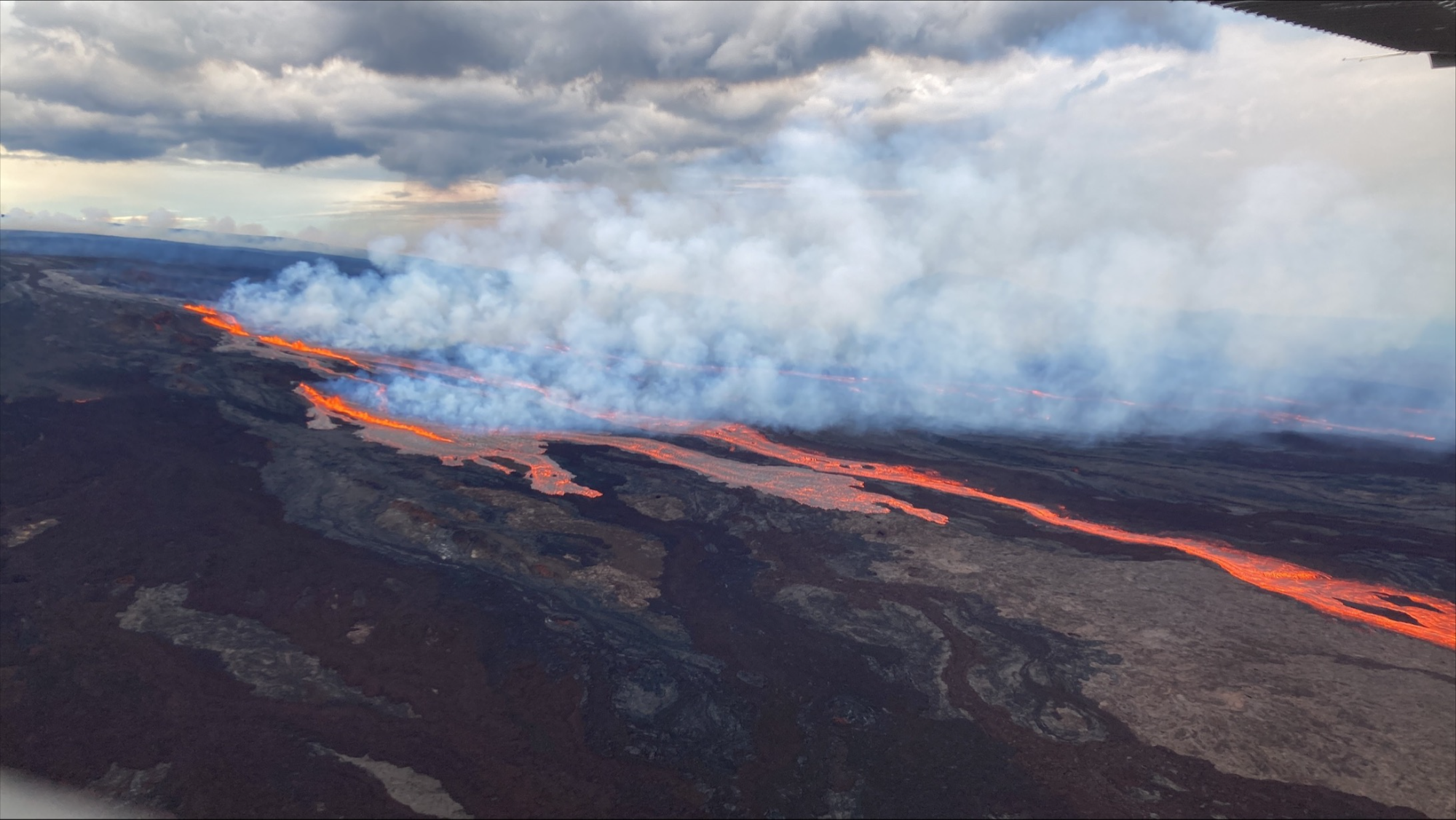

On the Big Island of Hawaii, the world’s largest active volcano is currently erupting, spewing debris and ash from its summit. This is the first time in almost 40 years that Mauna Loa has erupted.
The National Weather Service issued an ashfall advisory for portions of the Big Island, with up to a quarter-inch of ash accumulations possible in some areas. The advisory has since been cancelled. Several lava flows were reported in Mauna Loa’s Northeast Rift Zone, but no downslope communities are currently at risk from the lava. However, officials still told people living on the Big Island to be prepared for a worst-case scenario.
A timelapse video released by the United States Geological Survey (USGS) shows the ash plume and lava spewing up during the eruption and NOAA satellites captured the caldera’s heat signature from space.
[Related: Geologists: We’re not ready for volcanoes.]
According to Ken Hon, the scientist-in-charge at the Hawaiian Volcanos Observatory, the eruption began late on Sunday night in the summit caldera of the volcano after a series of closely spaced earthquakes. Piping hot magma moved to the surface, but lava flows were contained to the surface of the mountain’s summit crater and within the Northeast Rift Zone.
The USGS increased the volcanic alert level from a yellow advisory to a red warning and urged residents at risk to review preparedness guidelines. The agency also said that the early stages of a Mauna Loa eruption can be very dynamic and the location and advance of lava flows can change rapidly, based on data from previous eruptions.
“If the eruption remains in Moku‘āweoweo, lava flows will most likely be confined within the caldera walls,” the USGA wrote in a press release. “However, if the eruptive vents migrate outside its walls, lava flows may move rapidly downslope.”
The eruption began at 11:30 p.m. local time Sunday (4:30 a.m. EST Monday). While there is no indication of lava moving further down, Hawaii County Civil Defense opened shelters in Kailua-Kona and Pahala due to people self-evacuating along the South Kona coast and as a precaution.
The Big Island is the southernmost island in the Hawaiian archipelago, and Mauna Loa is one of five volcanoes together make up the Big Island. Mauna Loa stands at 13,679 feet above sea level.
[Related: Tonga survived the largest volcanic plume in the planet’s history this year.]
It is the neighbor of the Kilauea volcano, which erupted in a residential neighborhood in 2018. The eruption destroyed 700 homes. Since some of Mauna Loa’s slopes are steeper than Kilauea’s, the lava can flow much faster when it erupts, which is one of the causes for concern in this eruption.
Mauna Loa has erupted 33 times since 1893, making it the world’s most active volcano, according to the USGS. The most recent 1984 eruption ended what was then the longest quiet period in the volcano’s recorded history, a period of about nine years. Within hours of it’s first eruption on March 25, 1984, the mountain “expanded both mauka (toward the mountain) and makai (toward the ocean), creating a curtain of fire, a solid line of lava fountains over a mile long,” according to the National Park Service.

Another eruption occurred in 1950, when Mauna Loa’s lava traveled 15 miles to the ocean in less than three hours and lasted 23 days.
This week’s recent eruption followed weeks of warnings from officials that an event like this was possible and the some closures within Hawai’i Volcanoes National Park earlier this month. The USGS said that this “heightened unrest” began in mid-September, when earthquakes beneath the summit jumped from about 10 to 20 per day to 40 to 50 quakes per day.
